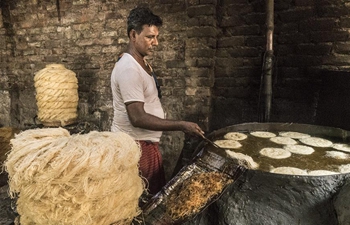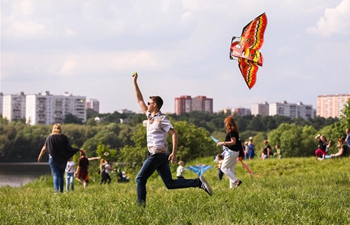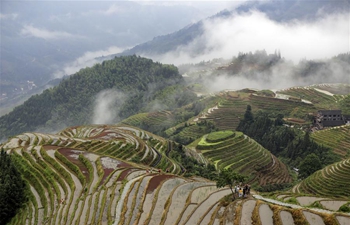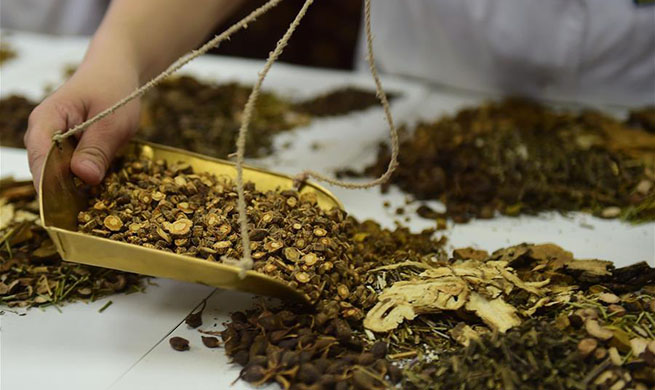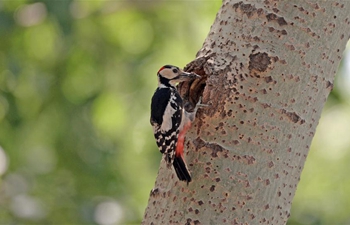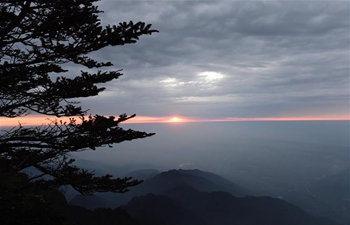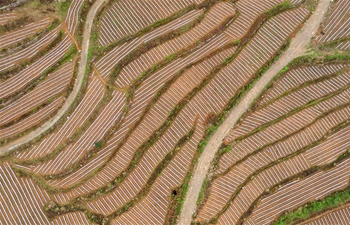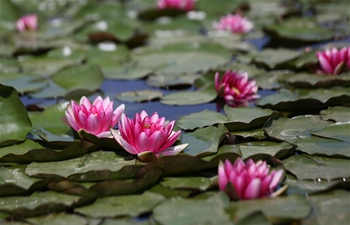KATHMANDU, May 27 (Xinhua) -- At least eight mountaineers lost their lives or went missing during the expedition of Mount Qomolangma this spring season. As overcrowding or "traffic jam" has been blamed as the major cause behind the increasing deaths, world record holder Nepali climber Kami Rita Sherpa claims deaths are not the consequence of the so-called "traffic jam".
"Traffic jam is usual in mountains, it's not a new phenomenon. Usually, climbers lose their lives when they don't follow the instructions of Sherpa guides in mountains and take decisions at their own," Kami Rita, who created a record by making the 24th ascent to Qomolangma this season, told Xinhua on Sunday upon his return from the base camp.
Kami Rita, 49, reached the top of the tallest mountain, known as Sagarmatha in Nepal, two times within a week this season, surprising fellow mountaineers and the entire world.
Having devoted his whole life in the snowy mountains, he opines it is normal for climbers and high-altitude workers to wait for their turns to ascend or descend on mountain depending upon the weather condition.
Kami Rita, who hails from Thame village of Solukhumbu district where 8,848 meters high Qomolangma is located, is of view that when one has to wait for a long time and is exposed in cold wind, they might face frost bite and other injuries, but not direct deaths.
"The most important thing for safe and secured expedition is to follow the direction and suggestions of the guides. Sherpas are the backbone of expeditions, who are well aware of every twist and turn and steps to be taken on mountains," he told Xinhua, adding that the Nepali government should discourage mountaineers who insist on climbing mountains without guides.
He compares strong and brave Sherpa guides as the pilot of an airplane, who leads the flight and takes passengers to their destinations safely.
At a time when it is becoming more difficult to find many mountain guides as the younger generation is gradually losing interest towards this physically-challenging profession, Kami Rita, who started mountaineering in 1992, fears the state of mountaineering industry after a decade or so.
"There is no recognition to the Sherpas and their contribution to mountaineering from the state side. It is high time that the state should seriously consider it in order to encourage Sherpas to stay in this career and to keep this industry intact," Kami Rita told Xinhua in his rented apartment in the capital.
For Kami Rita, who is currently engaged with Seven Summits Treks Company, climbing mountain is like living a life, full of challenges, while every step is towards the goal.
The celebrated climber, who aims to reach the top of Qomolangma for the 25th time next year while he will be celebrating his 50th birthday, however doesn't want his children to enter this profession.
"Mountaineering is full of pain. I spent my entire life in this pain, but I don't want my children to follow my footstep and face the same struggle. I want them to get into other professions which are more valued," Sherpa, a father of two, told Xinhua.
Qomolangma is one of the major revenue generating assets for the tourism industry of Nepal as the government charges 11,000 U.S. dollars for a foreigner as a permit fee for the expedition.
Nepal's Department of Tourism has issued climbing permits for at least 381 climbers from 44 expedition teams this spring season, while around 800 people have already reached the peak including Sherpa guides and high-altitude workers.

